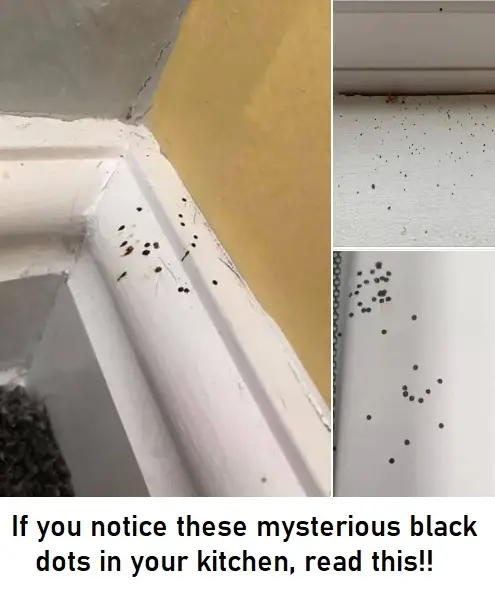Introduction
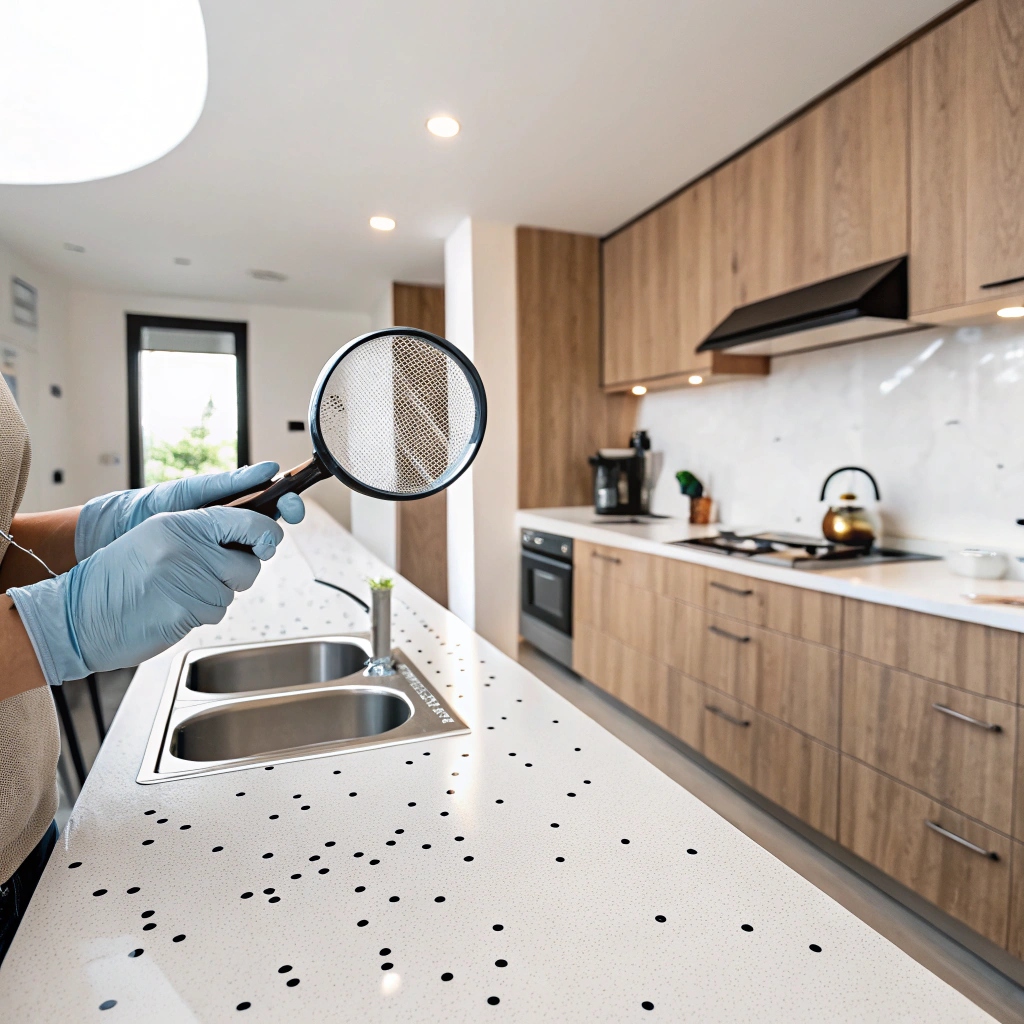
If you’ve noticed tiny black dots in your kitchen, you’re not alone. Many homeowners encounter these mysterious specks and wonder what they are, where they come from, and how to get rid of them. These small black particles can appear on kitchen counters, floors, and near food storage areas, raising concerns about hygiene and potential pest infestations.
Understanding the source of these black dots is the first step to solving the problem. They could be insect droppings, mold spores, or tiny food debris that accumulates over time. Some pests, like cockroaches, rodents, and pantry beetles, leave behind small black specks, which can be mistaken for dirt or crumbs. Identifying the cause will help you take the right approach to eliminate them and prevent them from coming back.
Key Benefits
Eliminating tiny black dots from your kitchen goes beyond simple cleaning—it helps maintain a healthier, pest-free environment. Understanding and addressing this issue offers several advantages:
1. Improved Hygiene and Food Safety
Black dots in your kitchen can be signs of pests or mold, both of which pose serious health risks. Pest droppings and mold spores can contaminate food, leading to foodborne illnesses. By identifying and eliminating these black specks, you reduce the chances of exposure to harmful bacteria.
2. Prevention of Pest Infestations
Many household pests, such as cockroaches, rodents, and ants, leave behind small black droppings. If left unchecked, these pests can multiply quickly, leading to a full-blown infestation. Addressing the problem early prevents costly extermination and keeps your home free from unwanted guests.
3. A Cleaner, More Pleasant Kitchen
Accumulated debris, mold, or insect waste can create an unsanitary environment. Removing black dots helps maintain a spotless kitchen, making cooking and dining more enjoyable. A clean space also prevents unpleasant odors that can result from mold growth or pest activity.
4. Protection of Kitchen Surfaces
Mold spores and pest droppings can stain countertops, floors, and kitchen cabinets. Over time, these stains become difficult to remove, potentially causing permanent damage. Regular cleaning and prevention methods help preserve the appearance and longevity of your kitchen surfaces.
5. Peace of Mind
Knowing that your kitchen is free from potential health hazards and infestations provides a sense of security. You can cook, store food, and enjoy your space without worrying about contamination or pest problems.
By tackling the root cause of these black dots, you’re taking proactive steps to ensure a safe and hygienic kitchen environment.
Ingredients
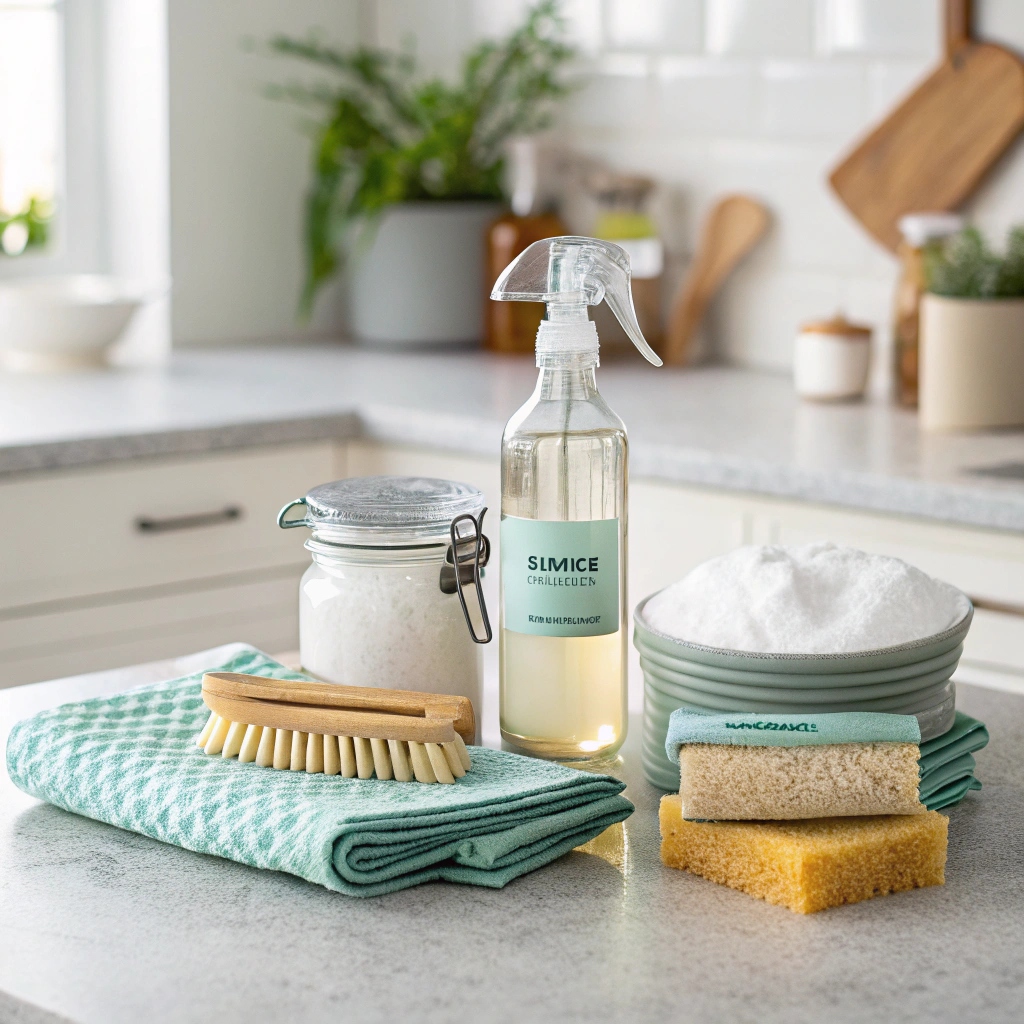
To effectively remove tiny black dots from your kitchen and prevent them from returning, you’ll need a combination of cleaning supplies, natural remedies, and preventive tools. Gather the following items before you begin:
Cleaning Supplies
- White vinegar – A natural disinfectant that helps break down grime and eliminate bacteria.
- Baking soda – Absorbs moisture and neutralizes odors, preventing mold and mildew.
- Hydrogen peroxide – Kills mold spores and sanitizes surfaces.
- Dish soap – Removes grease and food residue, making surfaces less attractive to pests.
- Microfiber cloths – Trap dirt and bacteria more effectively than paper towels.
- Scrub brush or old toothbrush – Helps remove stubborn black spots from surfaces and corners.
Natural Remedies for Pest Control
- Diatomaceous earth (food grade) – A natural powder that kills insects by dehydrating them.
- Essential oils (peppermint, tea tree, or eucalyptus) – Repel pests while leaving a fresh scent.
- Cinnamon or bay leaves – Deter common kitchen pests like ants and weevils.
Preventive Tools
- Airtight food storage containers – Prevent pests from accessing food sources.
- Trash bags with tight seals – Reduce odors that attract insects and rodents.
- Caulk or sealant – Closes small gaps where pests may enter.
- Sticky traps or insect monitors – Help detect pest activity before it becomes a major problem.
Instructions
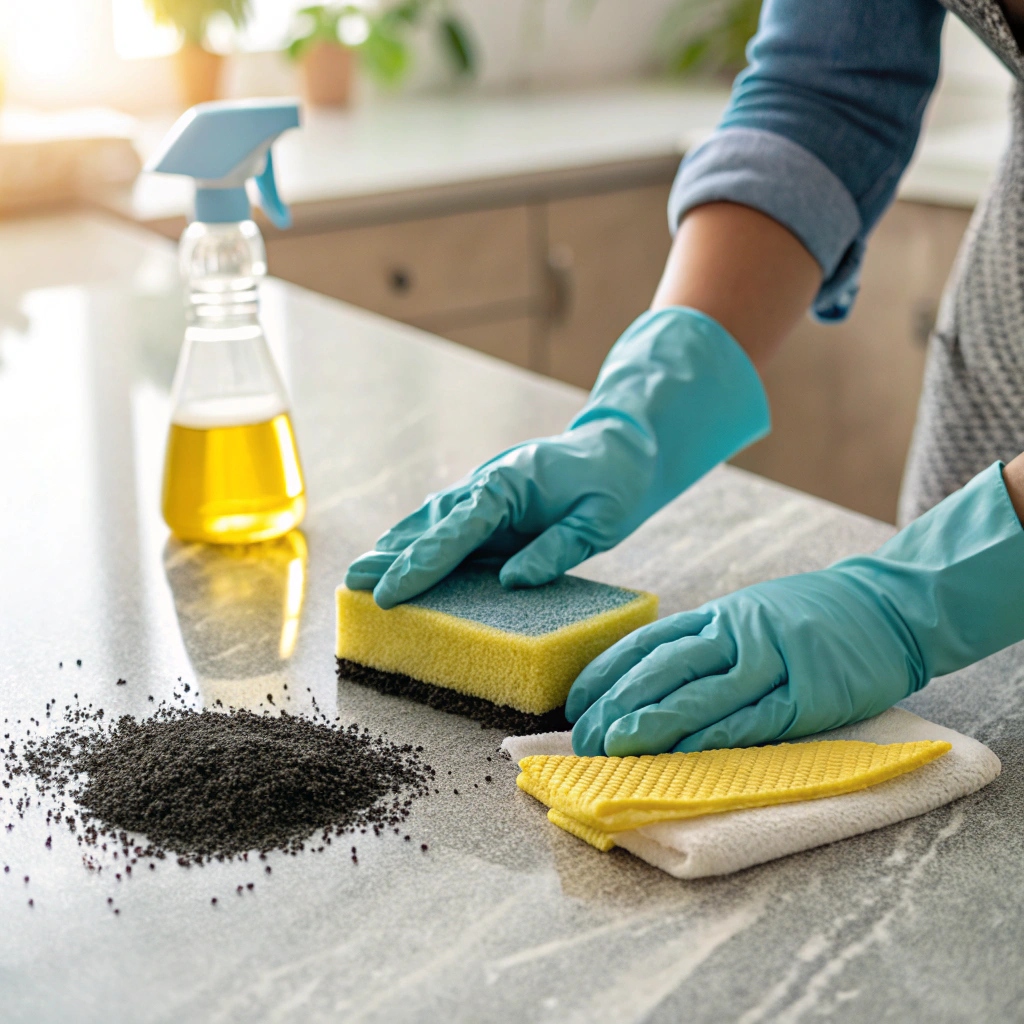
Follow these steps to identify, clean, and prevent black dots in your kitchen.
Step 1: Identify the Source
Before cleaning, determine what the black dots are. Check for signs of pests, mold, or food residue. Common areas to inspect include:
- Countertops and floors – Look for crumbs, stains, or insect droppings.
- Cabinets and pantry – Examine food packages for pest activity.
- Sink and drains – Check for mold or buildup in damp areas.
Step 2: Deep Clean Affected Areas
Once you identify the problem areas, clean them thoroughly using the appropriate method:
For Pest Droppings and Debris
- Vacuum or wipe up the black specks using a microfiber cloth.
- Disinfect surfaces with a mix of white vinegar and water (1:1 ratio) or hydrogen peroxide.
- Scrub stubborn spots with a small brush and dish soap.
For Mold or Mildew
- Sprinkle baking soda over the affected area to absorb moisture.
- Spray with hydrogen peroxide and let it sit for 10 minutes.
- Wipe clean and dry the surface completely.
For Food and Grease Buildup
- Apply dish soap and warm water to dissolve residue.
- Use a scrub brush to remove sticky debris.
- Rinse and wipe dry to prevent moisture buildup.
Step 3: Eliminate the Root Cause
Once the black dots are removed, take steps to prevent them from coming back:
- Seal food properly – Store grains, flour, and snacks in airtight containers.
- Take out the trash regularly – Dispose of food waste before it attracts pests.
- Fix leaks and control humidity – Use a dehumidifier or open windows to reduce moisture.
- Use natural pest deterrents – Place bay leaves, cinnamon, or essential oils in problem areas.
Step 4: Monitor and Maintain Cleanliness
- Check for new black specks weekly, especially in hidden areas.
- Keep floors and countertops crumb-free with daily wiping.
- Replace or clean sponges, dishcloths, and trash bins regularly to avoid mold growth.
Pro Tips and Variations
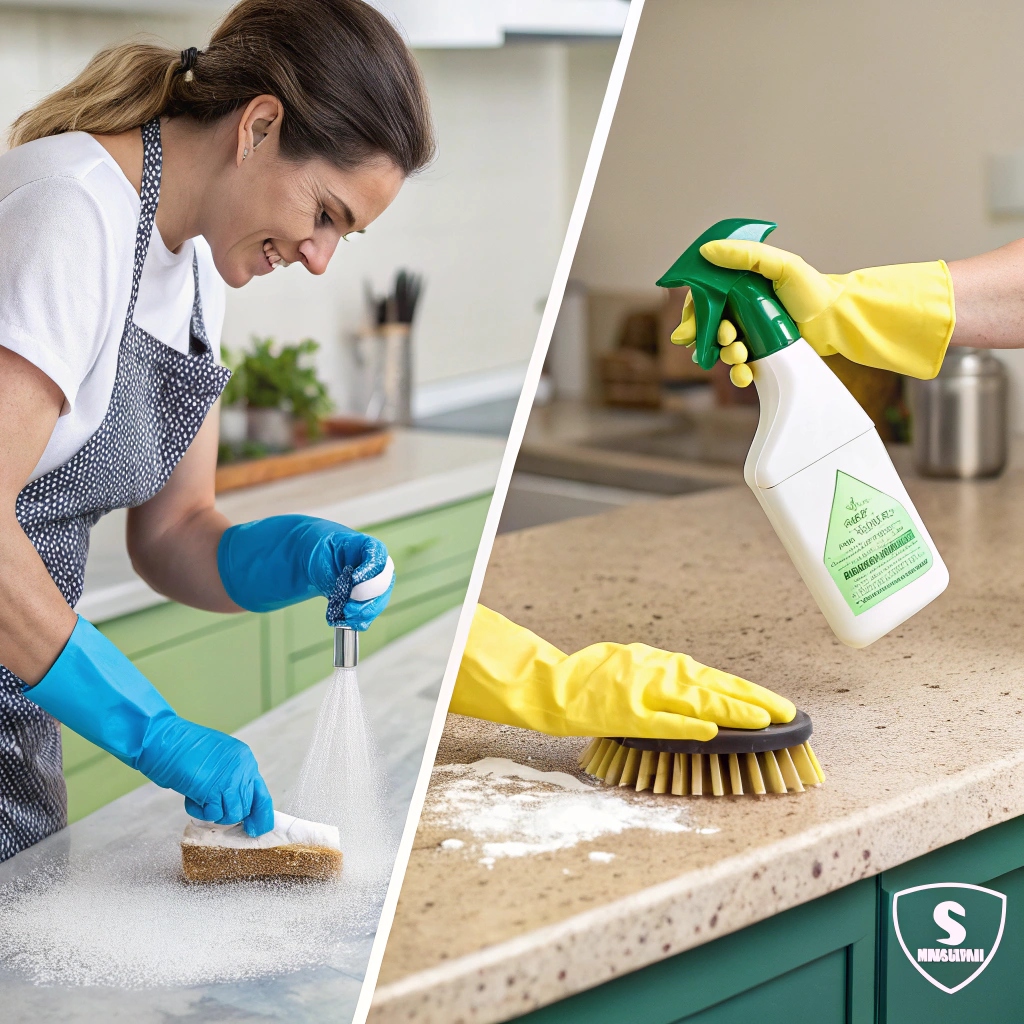
Keeping your kitchen free from tiny black dots requires more than just cleaning—it’s about developing long-term habits that prevent pests, mold, and dirt buildup. Here are some expert tips and alternative solutions to keep your kitchen spotless and hygienic.
Use a Blacklight to Detect Hidden Spots
Some pest droppings and mold spots aren’t visible to the naked eye. A blacklight flashlight can help you spot hidden problem areas in cabinets, under appliances, and along baseboards.
Regularly Clean Kitchen Appliances
Crumbs and grease buildup inside toasters, ovens, and microwaves can attract pests. Wipe down these appliances weekly and deep clean them once a month to prevent infestations.
Vacuum Instead of Sweeping
A vacuum cleaner with a HEPA filter can pick up tiny debris and insect droppings more effectively than a broom, which may spread particles around instead of removing them.
Use Natural Pest Repellents
Instead of relying on chemical sprays, try natural deterrents:
- Peppermint oil: Deters ants, mice, and cockroaches.
- Diatomaceous earth: A safe, natural powder that dehydrates and kills insects.
- Bay leaves and cinnamon sticks: Keep pantry pests like weevils away.
Store Pet Food Properly
If you have pets, avoid leaving their food out overnight. Store dry pet food in sealed containers to prevent attracting pests like ants or rodents.
Seal Entry Points
Even the smallest cracks and gaps in walls, windows, and floors can be entry points for insects and rodents. Use caulk or weather stripping to block these openings.
Conclusion
Tiny black dots in your kitchen may seem like a minor nuisance, but they often indicate larger issues such as pest infestations, mold growth, or food debris buildup. Identifying the cause is the first step to effectively eliminating them and preventing their return.
By using the right cleaning methods, sealing food properly, and addressing moisture problems, you can maintain a spotless and hygienic kitchen. Simple habits like wiping surfaces daily, vacuuming hidden areas, and using natural repellents make a significant difference in keeping your kitchen clean and pest-free.
Regular inspections and preventive measures will ensure that your kitchen remains a safe and welcoming space for cooking and dining. Taking action now not only improves cleanliness but also protects your food, surfaces, and overall home environment.
If you notice recurring black specks, revisit the steps outlined in this guide to pinpoint the issue and take swift corrective action. A well-maintained kitchen is key to a healthier home.
FAQs
Understanding the cause of tiny black dots in your kitchen can help you take the right action to eliminate them. Here are answers to some frequently asked questions.
1. What are the little black droppings in my kitchen?
Tiny black droppings in your kitchen are often signs of pest activity. Common culprits include:
- Rodents – Mouse and rat droppings are small, dark, and shaped like grains of rice.
- Cockroaches – Their feces look like coffee grounds or black pepper specks.
- Flies and gnats – Some flying insects leave tiny black specks near sinks or fruit bowls.
Inspect food storage areas, under appliances, and along baseboards to locate the source. Clean thoroughly and use natural deterrents like peppermint oil or diatomaceous earth to prevent further infestations.
2. What are the black spots on my kitchen?
Black spots on kitchen surfaces can be caused by:
- Mold or mildew – Often found near sinks, windows, or damp areas.
- Burnt food residue – Stubborn grease stains on stovetops or countertops.
- Insect droppings – Small black flecks near food or water sources.
To remove black spots, scrub with a mixture of vinegar and baking soda or hydrogen peroxide. If mold is present, address moisture issues to prevent regrowth.
3. What are these tiny black dots on my house?
If you notice tiny black dots beyond your kitchen, potential causes include:
- Pest activity – Insects and rodents leave droppings in multiple areas.
- Fungus spores – Mold can spread, especially in humid environments.
- Dirt or soot buildup – Airborne particles can settle on surfaces over time.
Check for patterns—if the dots appear near food, pests might be the cause. If they show up in damp areas, mold is likely the issue. Clean with disinfectants and monitor for recurring signs.
4. What are the tiny black pellets on my kitchen counter?
Tiny black pellets could be:
- Insect droppings – Roaches, ants, and flies leave small black feces.
- Food particles – Seeds or spice fragments from cooking.
- Mold spores – Especially if found near damp areas.

